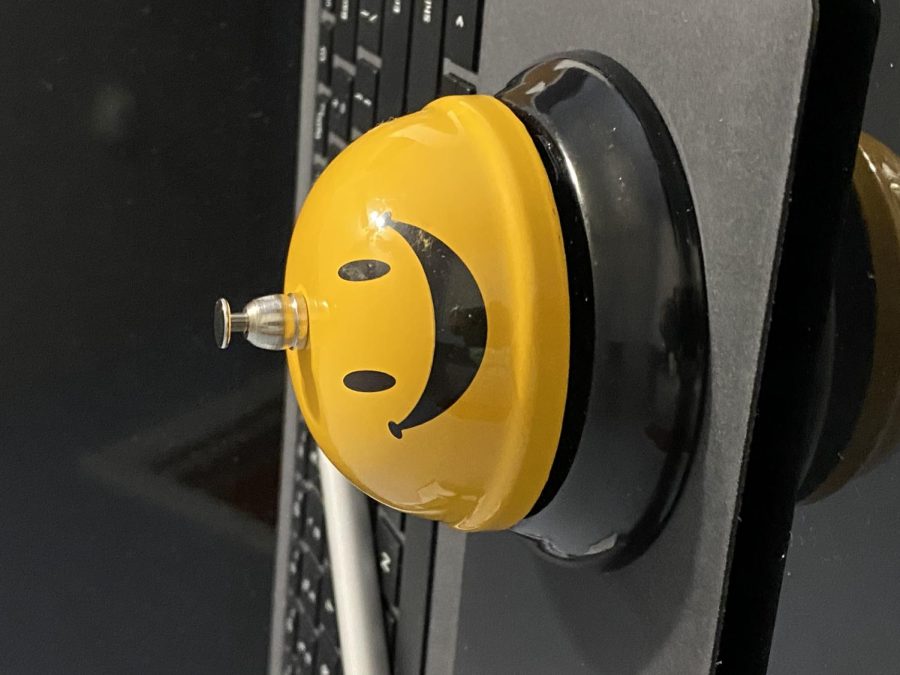Kent State professors overcome barriers to keep students motivated
February 2, 2021
To maintain student focus during her lectures, Mindy Nett rings a bell to alert her students when important information is coming up and they need to pay attention.
Now, the sound from the yellow bell is enough to bring students back from the land of distractions.
Kent State professors like Nett continue to find creative ways to keep students engaged during the coronavirus pandemic.
Most classes that were taught in-person are now being taught through remote learning, a change Kent State made in response to the coronavirus pandemic.
Nett, an associate professor of accounting, has three remote classes for the spring 2021 semester.
Remote classes hinder professor and student interaction.
“In person I could see the confusion,” Nett said. “I would know the examples shown were not working, and I could fix it.”
In general, the transition from in-person classes to remote was a new experience for some professors, but others didn’t feel it was a big change.
Jon Secaur, an associate professor of physics, was already accustomed to the nature of teaching online. He created Kent State’s first online physics class and taught online courses throughout his career.
Secaur pre-recorded his lectures and created a unique setup at his desk to mimic a traditional class whiteboard.
Professors should attempt to make remote learning feel similar to in-person classes, both Secaur and Nett agree.
Before the pandemic, Secaur was always looking for ways to keep his students motivated.
Professors who are passionate about the lessons they teach create an engaging environment for their students.
“I always ask myself why I would want to learn the lesson,” Secaur said. “I make sure I get across the beauty of even the most mundane lessons because there is always something interesting there.”
Certainly educators are working together to find ways to help students stay encouraged during this time.
Andrew Wiley, an associate professor in special education, discusses with his colleagues what improvements they can make in the classroom for their students’ benefit.
“[Showing] my students that I knew they were struggling,” he said. “I was always speaking to [that], and it helped them feel comfortable reaching out to me for help.”
Wiley provides his students with real world applications to remind them of their duties as future teachers.
“I constantly remind students there is a goal here,” he said. “They may feel that it is hard and unrewarding now, but they are going to be heroes in the classroom one day.”
Students’ motivation does not rely solely on their professor’s efforts.
A professor’s job is to assign work, but the student’s job is to find the motivation to complete it, said Maria Velten, a senior public health major.
“It won’t hurt to reach out to your professors if you are falling behind,” Velten said. “Most of the time professors are willing to help and will remember the student who put in the effort. Remember you are not alone. We are all trying to figure it out.”
Jessica Ames is a teaching reporter. Contact her at [email protected].












